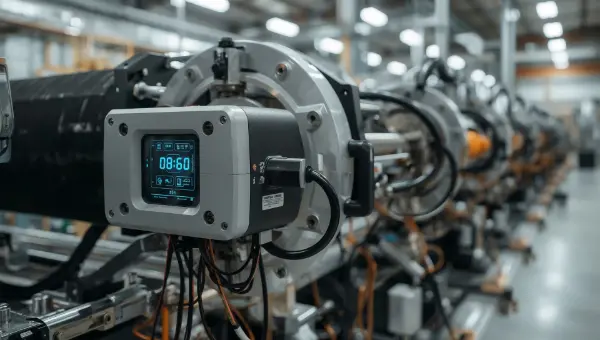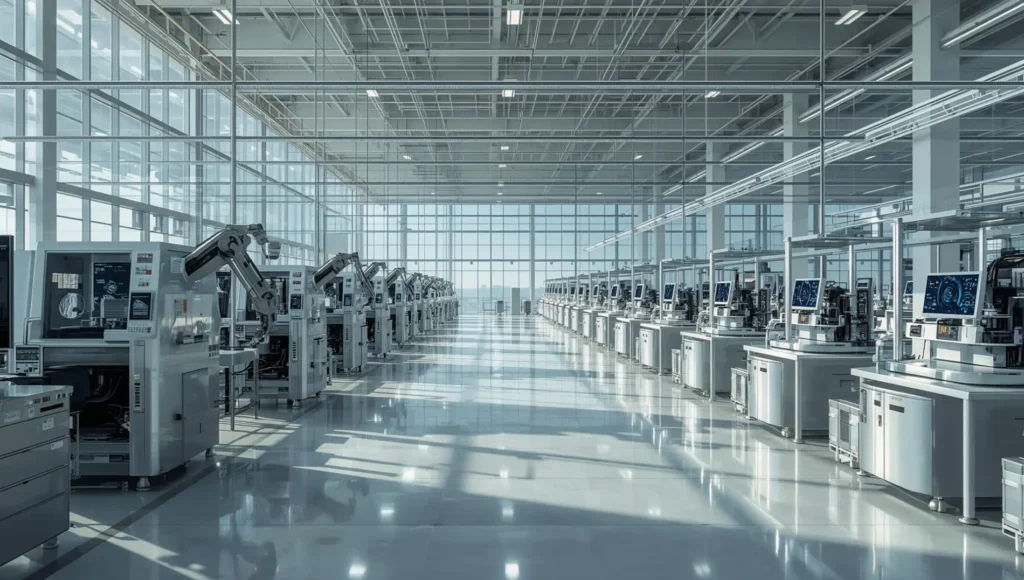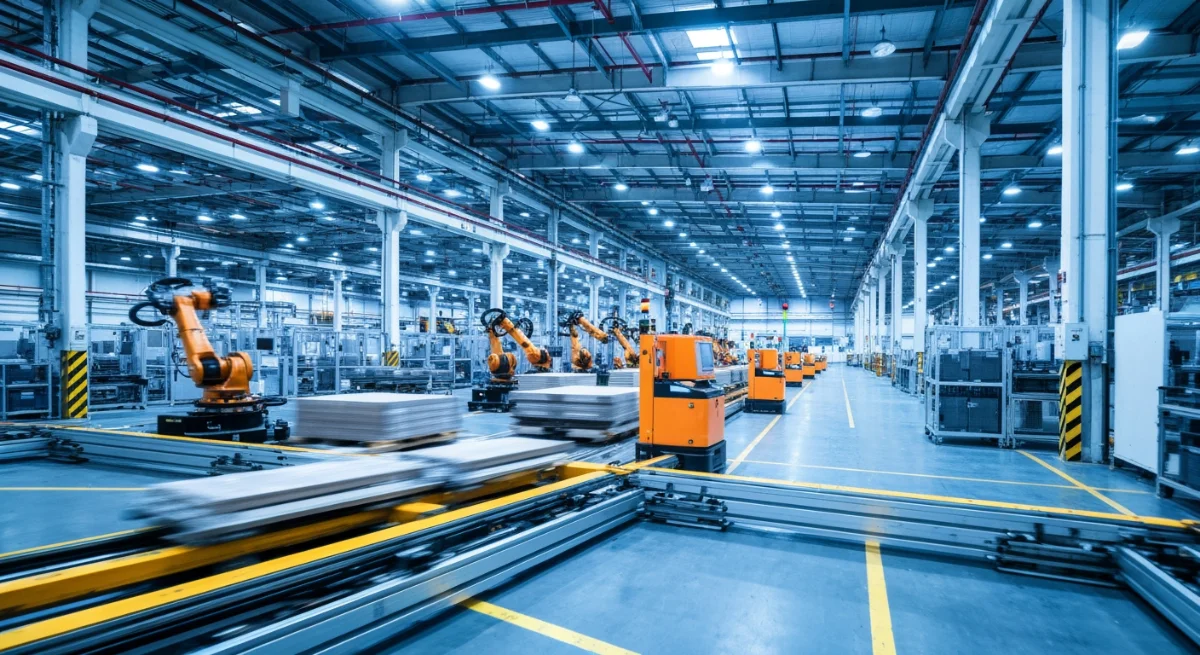Smart Maintenance and Predictive Analytics are Crucial for Increasing Productivity
How Smart Maintenance & Predictive Analytics Are Changing the Game for Industrial Plants centers on the powerful impact of data-driven automation in industrial settings. Smart maintenance involves using advanced technologies like sensors and IoT devices to continuously monitor equipment health. Predictive analytics processes this data to forecast potential failures before they happen.
Industrial plants benefit by shifting from reactive or scheduled maintenance to a proactive approach that minimizes unexpected breakdowns. This transformation enhances asset reliability, reduces maintenance costs, and boosts overall productivity.
Data-driven automation reshapes industrial plant operations by integrating real-time monitoring with machine learning algorithms. This integration enables rapid decision-making based on actual equipment conditions rather than fixed schedules or manual inspections.
Key points:
- Smart maintenance leverages sensor data to detect anomalies early.
- Predictive analytics uses historical and real-time data for failure prediction.
- Industrial automation powered by these tools drives efficiency and uptime.
Adopting smart maintenance and predictive analytics is essential for any industrial plant aiming to compete in today’s technology-driven landscape.
The Cost of Downtime in Industrial Plants
Downtime refers to periods when industrial equipment or entire production lines are non-operational due to failures, maintenance, or unexpected interruptions. This unplanned outage directly affects industrial productivity loss, resulting in halted production schedules, missed delivery deadlines, and increased operational expenses. Every minute of downtime can translate into significant financial setbacks for plants that rely on continuous operations.
The magnitude of downtime costs is staggering:
- Annual global losses exceed $50 billion due to unplanned outages across various industries.
- Production capacity drops by 5-20% during downtime events, severely impacting supply chain reliability.
- Extended downtime increases the likelihood of cascading effects, such as damaged equipment and compromised product quality.
The ripple effect of downtime extends beyond immediate repair costs. It disrupts workforce efficiency, inflates energy consumption per unit produced, and jeopardizes customer satisfaction. Plants without smart maintenance systems often face prolonged troubleshooting times and reactive fixes that fail to address root causes.
Industrial leaders recognize that reducing downtime costs is critical for maintaining competitiveness. Smart maintenance and predictive analytics offer a proactive approach to minimize these costly interruptions by anticipating failures before they escalate into full outages. This approach not only safeguards productivity but also ensures a more resilient operational environment.
Understanding Smart Maintenance and Predictive Analytics
Smart maintenance in industrial environments relies heavily on smart sensors that provide continuous, real-time monitoring of equipment conditions. These sensors are equipped with advanced features such as self-calibration and digital communication capabilities, which ensure accurate and reliable data without frequent manual intervention.
Features of Smart Sensors
- Self-calibration: This feature allows sensors to adjust automatically to environmental changes or sensor drift, maintaining measurement precision over time.
- Digital communication capabilities: With this feature, smart sensors can seamlessly integrate with centralized control systems, transmitting data instantly for processing.
Key Characteristics of Smart Maintenance
Key characteristics of smart maintenance include:
- Real-time monitoring: Constant tracking of critical parameters like vibration, temperature, pressure, and humidity.
- Automated diagnostics: Algorithms embedded within sensor networks detect anomalies immediately.
- Remote accessibility: Operators can access sensor data from anywhere using IoT platforms.
How Predictive Analytics Works
Predictive analytics transforms raw sensor data into actionable insights by leveraging machine learning models. These models analyze historical and current data patterns to identify subtle signs of potential failures before they escalate into costly breakdowns.
The Process of Predictive Analytics
The process involves:
- Collecting continuous streams of sensor data from multiple equipment points.
- Preprocessing the data to filter noise and standardize measurements.
- Feeding the cleaned data into machine learning algorithms trained to recognize failure signatures.
- Generating real-time alerts and maintenance recommendations based on predicted risks.
Techniques Used in Predictive Analytics
Machine learning techniques such as anomaly detection, regression analysis, and classification enable predictive analytics systems to adapt dynamically to changing operational conditions. This adaptability increases the accuracy of failure forecasts as more data becomes available over time.
Benefits of Combining Smart Sensors with Predictive Analytics

By combining smart sensors with advanced predictive analytics, industrial plants shift from reactive or scheduled maintenance approaches to a proactive strategy that maximizes equipment uptime and optimizes resource allocation.
The ability to foresee equipment problems early helps avoid unexpected disruptions while minimizing unnecessary maintenance tasks.
Key Technologies Enabling Smart Maintenance & Predictive Analytics
Smart maintenance and predictive analytics rely heavily on a network of advanced IoT-enabled sensors that monitor critical parameters in industrial equipment. These sensors collect real-time data essential for understanding the health and performance of machinery. Two of the most common sensor types are:
- Vibration Sensors: Measure oscillations and mechanical imbalances in rotating equipment like pumps, motors, and compressors. Abnormal vibration patterns often serve as early warnings of bearing failures, misalignments, or loosened components.
- Temperature Sensors: Track heat levels in engines, turbines, and electrical components. Sudden spikes or gradual increases in temperature can indicate overheating, friction issues, or insulation breakdowns.
These sensors are designed with self-calibration features to maintain accuracy over long periods without manual intervention. Their ability to digitally communicate through wireless protocols such as Wi-Fi, Bluetooth Low Energy (BLE), or industrial standards like MQTT ensures seamless integration into broader IoT platforms.
Data from these sensors streams continuously to cloud-based or edge computing systems where machine learning algorithms analyze trends and anomalies. This setup enables predictive analytics to forecast potential failures before they happen, allowing maintenance teams to act proactively rather than reactively.
The combination of vibration analysis, temperature monitoring, and IoT integration is changing the game for industrial plants by drastically reducing downtime. Instead of relying on scheduled checks or reactive repairs, you get a dynamic system that adapts to real-time conditions and improves operational efficiency through precise diagnostics.
By tapping into these technologies, plants transform raw sensor data into actionable insights that optimize maintenance schedules, extend asset life, and minimize unexpected breakdowns—a leap forward from traditional maintenance methods.
Benefits and Industry Use Cases of Smart Maintenance & Predictive Analytics

Smart maintenance and predictive analytics deliver measurable advantages across multiple industrial sectors. Key benefits include:
- Reduced Downtime: Plants adopting these technologies report a 30-50% decrease in unplanned downtime. This improvement directly boosts productivity by keeping critical equipment operational longer.
- Maintenance Cost Savings: Companies typically achieve an 18-25% reduction in maintenance expenses. Predictive insights enable targeted interventions, avoiding unnecessary routine servicing or catastrophic failures.
- Extended Asset Life: Continuous monitoring and early fault detection preserve equipment integrity, extending the lifespan of costly machinery.
- Improved Safety: Early warnings triggered by sensor data help prevent hazardous incidents, enhancing workplace safety protocols.
Petrochemical Industry Case Studies
The petrochemical sector exemplifies how smart maintenance transforms operations through real-world applications:
- Shell: By integrating smart sensors with predictive analytics platforms, Shell has optimized maintenance schedules for pumps, compressors, and turbines. These efforts have cut unplanned outages by nearly half while improving operational safety. Real-time data streams from vibration and temperature sensors feed machine learning models that predict failures days or weeks ahead.
- Chevron: Chevron’s implementation focuses on corrosion monitoring and rotating equipment health. Using IoT-enabled devices coupled with advanced analytics, the company identifies early signs of wear and tear. As a result, Chevron has reduced maintenance costs substantially while minimizing production interruptions.
These examples highlight how combining sensor technology with predictive algorithms creates a robust system for anticipating equipment issues before they escalate. The quantifiable improvements translate into millions saved annually, stronger asset reliability, and more efficient resource allocation.
Industrial plants looking to replicate such success should focus on selecting appropriate sensors tailored to their unique processes and integrating them into holistic analytics frameworks that support proactive decision-making around maintenance activities.
Implementation

Implementing smart maintenance and predictive analytics in industrial plants presents several challenges you need to address carefully:
1. Initial Investment Costs
Upfront expenses for installing smart sensors, upgrading infrastructure, and training staff can be substantial. Budget constraints often delay or limit the scope of implementation.
2. Integration Complexity
Combining new IoT devices and analytics platforms with existing systems like CMMS, MES, and enterprise servers requires meticulous planning. Data interoperability and seamless communication between components are critical for success.
You face these hurdles while striving to unlock the full potential of predictive maintenance. However, advances in artificial intelligence (AI) are making it easier to overcome barriers:
- Advanced AI Algorithms improve accuracy in forecasting equipment failures by learning complex patterns from sensor data. These algorithms enable faster decision-making with less human intervention.
- Edge Computing reduces latency by processing data near the source, allowing real-time analytics without overwhelming network resources.
Smart maintenance is no longer a futuristic concept but a practical strategy transforming plant operations. The fusion of IoT technology and AI-driven predictive analytics is changing the game for industrial plants—driving down downtime and boosting productivity through data-driven automation. Embracing these innovations helps you stay competitive in an increasingly digital industrial landscape.








